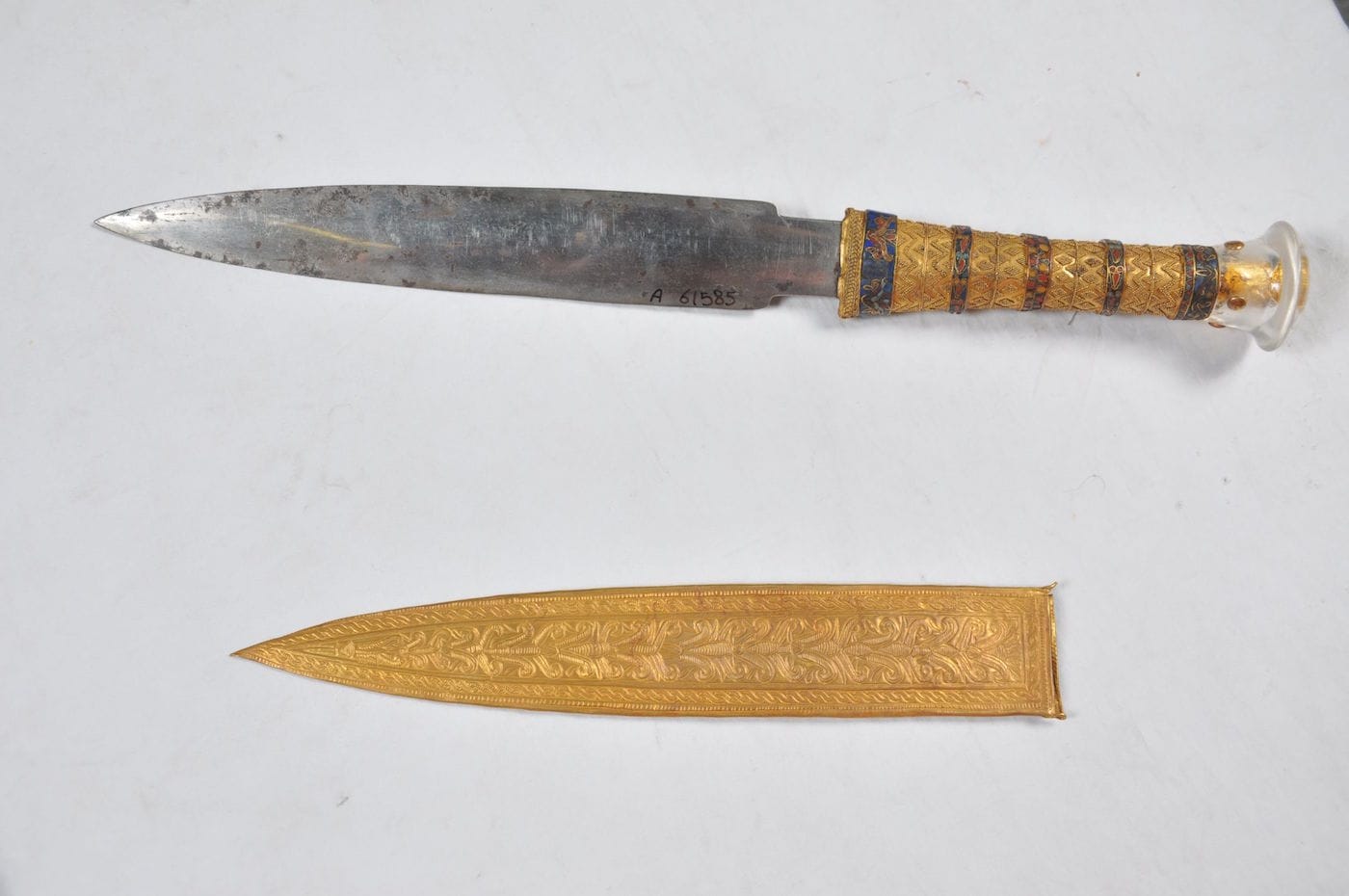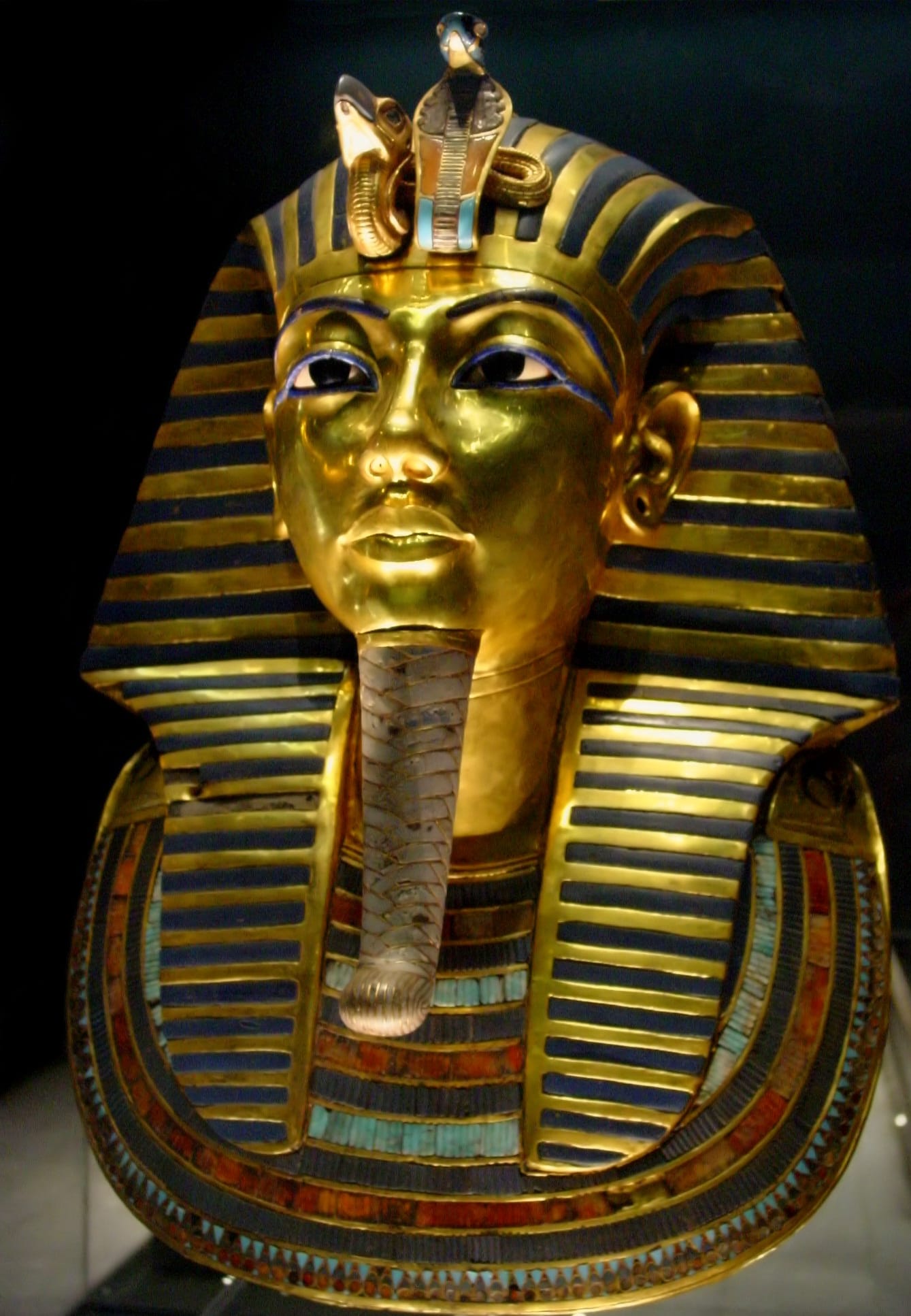King Tut's Dagger Is Actually from Outer Space
King Tut lay underground in his tomb for a few thousand years, but a dagger he kept by his side has far-out origins in outer space.

King Tut lay underground in his tomb for a few thousand years, but a dagger he kept by his side has far-out origins in outer space. Researchers from Pisa University, Milan Polytechnic, and the Egyptian Museum in Cairo have determined that the knife was made from meteoric iron, using non-invasive x-ray fluorescence to examine the composition of its blade. Their findings, published in the journal Meteoritics and Planetary Science, reveal that the surface contains high percentages of nickel (nearly 11%) and iron with a minor concentration of cobalt — a makeup in line with that of meteoric iron.
“The nickel and cobalt ratio in the dagger blade is consistent with that of iron meteorites that have preserved the primitive chondritic ratio during planetary differentiation in the early solar system,” head author Daniela Comelli of Milan Polytechnic told Discovery News.

Currently at the Egyptian Museum, the dagger is one of two discovered during Howard Carter’s 1925 discovery of the young pharaoh’s tomb. It lay in the mummy’s wrappings by his right thigh, displaying a finely made and non-rusted blade with a handle of fine gold that boasts granulation work and glass inlays. Decorating its sheath is a pattern of feathers on one side and a palmette motif on the other. The second dagger, found on the 18th Dynasty ruler’s abdomen, has a blade of gold.
Scholars and scientists have long explored and debated the astral origins of the iron dagger: in 1973, researcher Judith Kingston Bjorkman’s study on meteors and meteorites in the Ancient Near East referred to the weapon having a meteoritic origin, but according to Comelli and her team, Bjorkman did not specify the analytical techniques. Another study in 1995 that also employed x-ray fluorescence spectrometry rejected any extraterrestrial connection, suggesting that the nickel content of the blade was merely 2.8%. The authors of this most recent report credit their new findings to a drastic improvement in technology over the last two decades that allows for new modes of analysis. After pinpointing and examining 20 iron meteorites found within an area with a 1200 mile radius arbitrarily centered in the Red Sea, they have even matched the dagger’s metal composition to that of a specific meteorite: known as Kharga, the fine, just over two-pound octahedrite was found in 2000 about 150 miles west of Alexandria and has contents that lie within a 10% match of the dagger’s.
The knife’s high manufacturing quality, the researchers note, also shows a “significant mastery of ironworking.” They cite the 2013 discovery of 5000-year-old iron beads as the only other valuable iron artifact from ancient Egypt accurately proven to have meteoritic origins, a rarity that suggests the ancient Egyptians reserved the material to produce highly precious or ceremonial objects.
“Beyond the Mediterranean area, the fall of meteorites was perceived as a divine message in other ancient cultures,” the researchers write, adding that ancient civilizations in Tibet, Syria and Mesopotamia as well as prehistoric Hopewell communities likely also used meteoritic iron to produce objects — although only a few detailed scientific studies have clearly confirmed such use of the material.
Their report also notes these findings lend new insight into the use of the term “iron”: around the 19th dynasty, a new composite hieroglyphic term emerged that translates into “iron of the sky,” apparently used to describe all forms of iron.
As the study concludes: “The introduction of the new composite term suggests that the ancient Egyptians, in the wake of other ancient people of the Mediterranean area, were aware that these rare chunks of iron fell from the sky already in the 13th-century BCE, anticipating Western culture by more than two millennia.”




